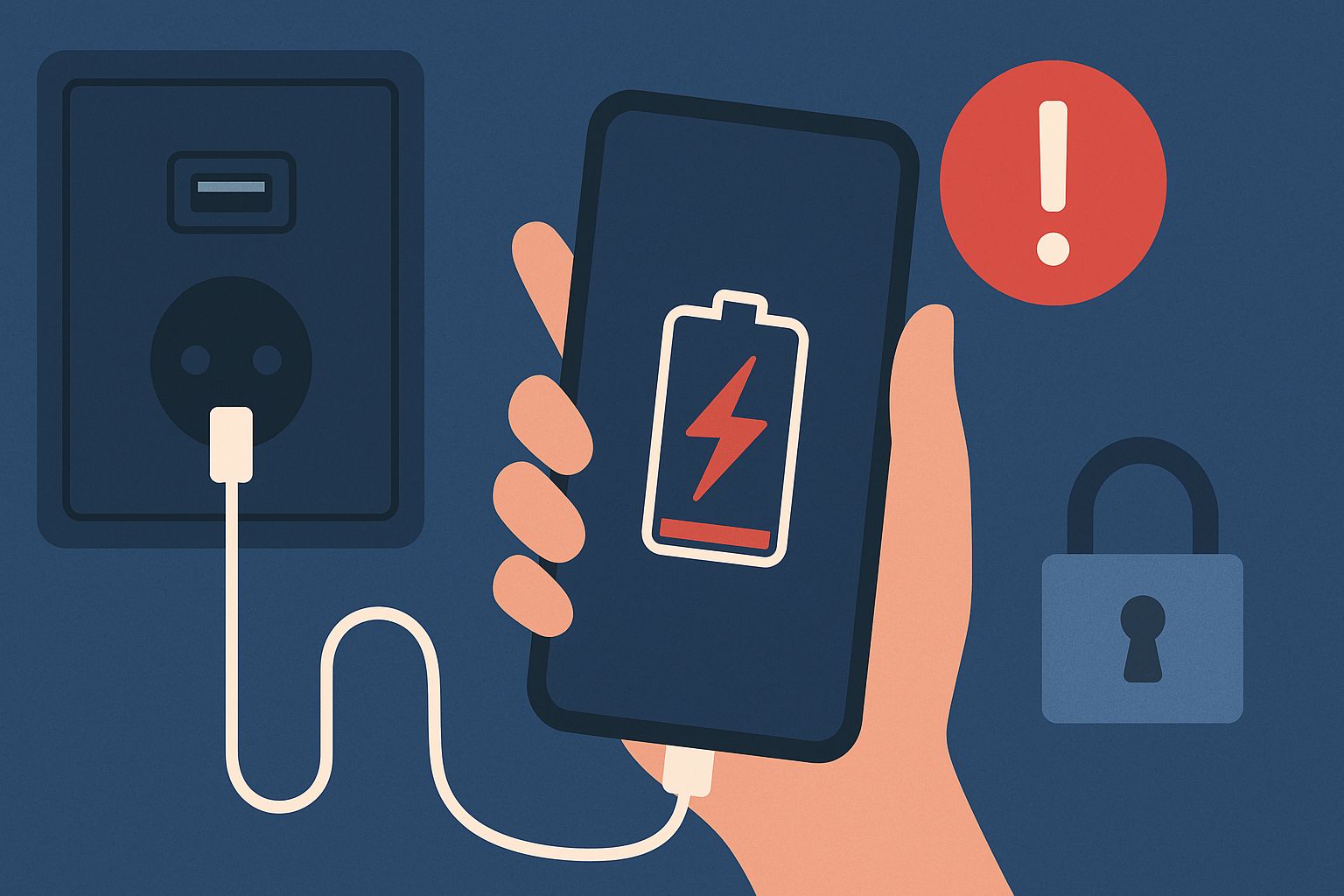- The Cyber Safety Newsletter
- Posts
- 🔌 The Real Risks of Charging Your Phone in Public
🔌 The Real Risks of Charging Your Phone in Public

You're at the airport, your phone battery is in the red, and there it is: a free USB charging station. It seems like a lifesaver.
But it could also be a threat.
A cybersecurity concern known as “juice jacking” has resurfaced in recent years, with warnings from federal agencies like the FCC and TSA. While it may not be a daily danger, the technique is real, and the risk rises in high-traffic public areas like airports, hotels, shopping malls, and conference centers.
Let’s unpack what juice jacking actually is, why it matters, and how to stay charged without getting compromised.
⚠️ What Is Juice Jacking?
Juice jacking is a type of cyberattack that occurs when you plug your phone into a compromised USB port or cable. Because USB cables carry both power and data, a malicious actor can use that connection to:
Transfer malware to your device
Steal data, such as files, contacts, or even saved passwords
Bypass permissions if the device is unlocked or vulnerable
In short, a USB port that looks like it’s just delivering power may also be delivering an attack.
"Malware installed through a corrupted USB port can lock a device or export personal data and passwords directly to the perpetrator."
— FCC Advisory on Juice Jacking (fcc.gov)
🧪 Is This Really Happening?
Proof-of-concept attacks have existed for many years and have been regularly demonstrated by researchers at DEF CON, Black Hat, and other security conferences. Tools like the “USB Ninja” and “O.MG Cable” look and function like normal charging cables—but contain tiny embedded chips capable of stealing passwords, data, and delivering malware directly to your device.
These tools are available for sale online, and real-world attackers don’t need much access to deploy them.
📉 Common Targets
While most people aren't likely to be targeted directly, certain scenarios increase your risk:
Business travelers with sensitive data
Government or military personnel
High-profile events like tech conferences
Travelers in high-traffic public locations
Even if you're not a high-value target, a malicious charging station could collect massive amounts of data from random victims and filter it later.
🔒 How to Stay Safe
✅ Use a USB Data Blocker
Also known as a “USB condom,” these small adapters sit between your USB cable and the port. They physically block the data part of the connector, allowing only power to pass through. You can get them online for around $10.
✅ Carry Your Own Charger
Use a standard AC wall charger plugged directly into an electrical outlet. These don’t carry data signals—just power.
✅ Use a Power Bank
A portable battery eliminates the need to charge from public sources. Charge it at home or in a secure location, and use it on the go.
✅ Opt for Charge-Only Cables
Some cables are built to exclude the data wires entirely. If you travel often, it’s worth picking one up.
✅ What Not to Do
Don’t use unknown USB cables found in airports, lounges, hotels, or giveaways. These can be tampered with.
Don’t assume that any USB port is safe, even if it's part of a trusted location. Attacks can happen via third-party modifications.
🧭 TL;DR
Juice jacking is a real cyber threat that exploits USB power connections to steal data or install malware.
Use USB data blockers, portable chargers, or charge-only cables to avoid risk.
Avoid using public USB ports unless absolutely necessary—and never trust unknown cables.
✅ Final Thought
Cybersecurity is often about minimizing risk, not eliminating it entirely. While juice jacking may not be as common as phishing or ransomware, it’s an easy threat to defend against—if you plan ahead.
So next time your phone hits 1% in a crowded terminal, think twice before plugging in.
Your data is worth more than a quick charge.
Want to learn more tips for personal cyber safety? Subscribe or read past issues at:
👉 https://newsletter.thecybersafety.company
Have a topic you'd like us to cover?
📬 Email me directly at [email protected]
Until next time — stay private, stay safe.
— Peter Oram
Chief Cyber Safety Officer
FOLLOW US ON SOCIAL MEDIA


